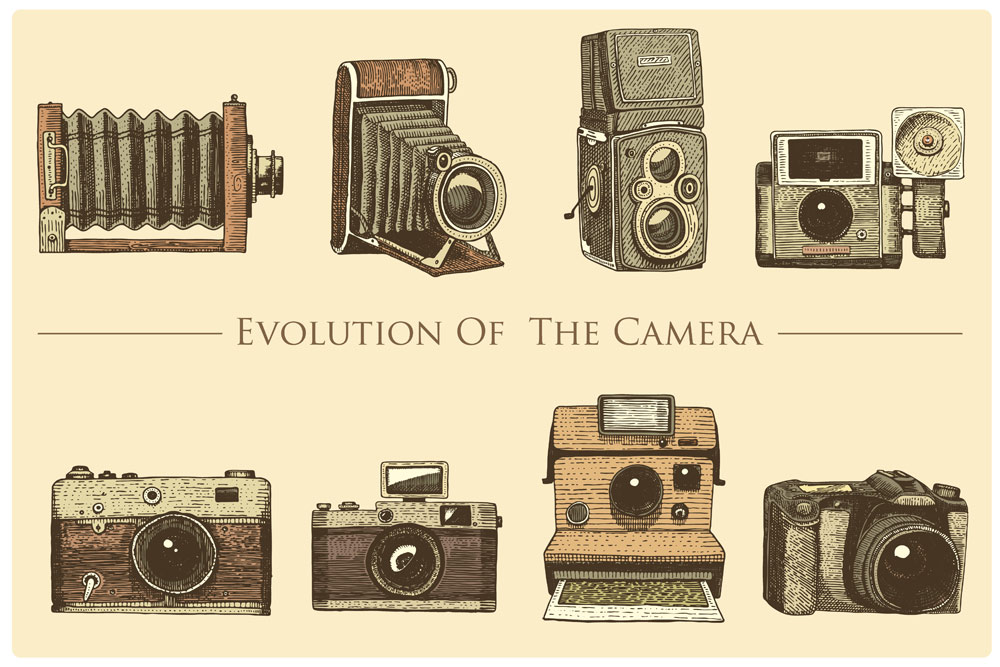The first photograph, View from the Window at Le Gras taken in 1826 by Joseph Nicéphore Niépce, would be more accurately called the earliest surviving photograph. It is known that Thomas Wedgewood had previously attempted to capture permanent images on boards covered in light-sensitive chemicals, but his experiments had limited success. The picture by Niépce is considered to be the first successful photograph.
Niépce
Niépce was a middle-class Frenchman who dabbled in scientific experiments alongside his brother Claude. Their first attempts at using light-sensitive chemicals to produce images took place in 1816, but as the brothers were also working on other inventions, progress was not made quickly. Niépce gave his method the name ‘Heliography’, a process that involved using bitumen on pewter or zinc plates which could then be inked for printing.
Heliography
After some time perfecting the Heliographic process of mechanical reproduction and using it to copy engravings, Niépce at last came upon the process that would make the first permanent photograph. A pewter plate coated in his bitumen solution was inserted into a ‘camera’ at his window and left for an exposure thought to have lasted eight hours. On removal, the soft bitumen was washed from the plate with a lavender and petroleum mix, revealing the view from that window in La Gras.This ground-breaking image was almost lost after Niépce travelled to England to spread word of his accomplishment. On showing the photo to a botanical illustrator, Francis Bauer, it was suggested that Niépce write an account of his breakthrough for the Royal Society. His intended talk on the subject never happened, however, and Niépce gifted the image and the memoir to Bauer when he departed for France. The ‘heliograph’ went through a number of owners until it was ‘lost’ after an exhibition in 1905. It didn’t show up again until 1952 when the last-known owner’s widow discovered it in a forgotten shipping crate.The image was eventually authenticated by historians of photography Helmut and Alison Gernsheim, who had been searching for the image in order to ascertain whether Niépce was indeed the world’s first true photographer. Much debate surrounded the date of creation with estimates ranging from 1824 to 1827. The eventual compromise on 1826 still puts Niépce nine years ahead of Henry Fox Talbot, and eleven years before Daguerre in their photographic achievements.